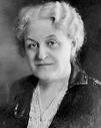Carrie Chapman Catt 1859 - 1947
November 29, 2007
 Carrie Chapman
Catt 1859 - 1947 was
part of the National Woman Suffrage
Association
which began when homeopaths Elizabeth Cady
Stanton,
Caroline Brown
Winslow,
Susan Ann Edson,
Clemence Lozier and
homeopathic supporters Lucretia
Mott,
Susan B Anthony, Lucy
Stone,
Julia Ward
Howe,
Frances
Willard,
Matilda Joslyn Gage,
Anna Howard
Shaw,
Martha Coffin Pelham
Wright, Mary Wright
Sewell, and Josephine
S Griffing and
others met at Seneca
Falls
in 1848.
Carrie Chapman
Catt 1859 - 1947 was
part of the National Woman Suffrage
Association
which began when homeopaths Elizabeth Cady
Stanton,
Caroline Brown
Winslow,
Susan Ann Edson,
Clemence Lozier and
homeopathic supporters Lucretia
Mott,
Susan B Anthony, Lucy
Stone,
Julia Ward
Howe,
Frances
Willard,
Matilda Joslyn Gage,
Anna Howard
Shaw,
Martha Coffin Pelham
Wright, Mary Wright
Sewell, and Josephine
S Griffing and
others met at Seneca
Falls
in 1848.
Chapman Catt was especially close to Susan B Anthony, who chose Chapman Catt to succeed her as President of the National Woman Suffrage Association.
Key coordinator of the woman suffrage movement and skillful political strategist, Carrie (Lane) Chapman Catt revitalized the National American Woman Suffrage Association (NWSA) and played a leading role in its successful campaign to win voting rights for women. In 1920 she founded the League of Women Voters upon ratification of the Nineteenth Amendment to the U.S. Constitution.
In 1902, Catt helped organize the International Woman Suffrage Alliance (IWSA), which eventually incorporated sympathetic associations in 32 nations. In 1904, she resigned her NWSA presidency in order to care for her ailing husband George Catt. His death in October 1905, followed by the deaths of Susan B. Anthony (February 1906), Catt’s younger brother William (September 1907) and her mother (December 1907) left Catt grief-stricken.
Her doctor and friends encouraged her to travel abroad; as a result, she spent much of the following eight years as IWSA president promoting equal-suffrage rights worldwide.
Aletta Jacobs was the first female medical doctor in the Netherlands. She was also pacifist and a campaigner for women’s suffrage. She worked for the International Woman Suffrage Alliance (IWSA) and travelled with Carrie Chapman Catt to support women to get the vote in Europe, Africa and Asia.
Chapman Catt also worked with Eleanor Garrison:
Eleanor’s letters are particularly significant. Her letters to family, especially to her mother provide valuable insight into the New York State suffrage campaign and her work with Carrie Chapman Catt.
Stepping down from the NAWSA presidency after its victory, Catt continued her work for equal suffrage, promoting education of the newly-enfranchised by founding the new League of Women Voters and serving as its honorary president for the rest of her life.
In 1923, with Nettie Rogers Shuler, she published Woman Suffrage and Politics: The Inner Story of the Suffrage Movement.
In her later years, Catt’s interests broadened to include the causes of world peace and child labor. She founded the National Committee on the Cause and Cure of War in 1925, serving as its chair until 1932 and as honorary chair thereafter. She also supported the League of Nations and, later, the United Nations.
Stella Virginia Roderick editor of “The Woman Citizen” and “Everybody’s Magazine” and Director of Nettie Fowler McCormick Biographical Association published articles concerning the travels and career of feminist leader Carrie Chapman Catt.
Chapman Catt’s home is now a museum. Chapman Catt donated her library to the American Nation.
After the death of her second husband George, Chapman Catt lived with her close friend Mary Garrett Hay for over twenty years.